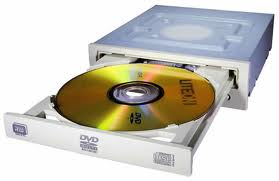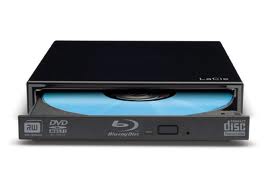CDs and DVDs have become a popular technology in recent years. These two components have often become synonymous for meaning compact discs. However these two elements mean different things, they made for different purposes. CDs and DVDs are similar in structure and usage, however DVDs offer more data storage capacity comparing to CDs. CDs are used commonly for audio and program files while DVDs are used for video program files. To learn more about the CDs and DVDs continue reading this page, it will provide you with valuable information.
CDs Function
CD abbreviation refers for Compact Discs. Mainly, it is an optical disc used to store data. These CDs manufactured to substitute the floppy disks that are used to store files and programs from the computer. Though, CDs were created for playing back sound recording, over the years different types of CDs produced for different purposes of works. CDs can hold up 700 MB worth of data (Difference between CD and DVD,n.d)Standard CDs are in recent years used to store songs, data, drivers, programs, etc.
DVDs Function
DVD stands for Digital Versatile Disc. DVD are the same of CDs, they are also an optical disc storage devices. There are many different types of DVDs. They allow users to hold data up to 17.08 GB on dual-layer and dual- sided disc. Single layered, single-sided disc holds about 4.7 GB of data (Difference between CD and DVD,n.d) Mainly, they are used to store videos and films, as well as to store and distribute big programs that cannot fit onto a disk.
How does CD/ DVD function?

Data storage on CD/DVD
Compact discs are consists of four layers of materials. From bottom to top, the layers are a polycarbonate layer, a reflective layer, a surface of lacquer and a screen layer to place artwork or lettering of the CD cover. CDs are optical storage media with 3.5 inch floppy drives and hard drivers store data by magnetically encoding in the disc. CD stores data as bumps until the reflective surface. Every switch between a bump and a flat surface on the disc translates to binary codes of 1s and 0s. The data compose a spiral way from the center of the disc. The CD/ DVD ROM drive recognizes this format and can read data (How Does a CD/DVD ROM Drive Function,n.d) CDs contain 650 to 600 MB of data, and DVD has more storage spaces due to the more number of the layers, they can hold about 2 GB of data.
Reading the Data
The basic components of CD/ DVD ROM drive are a small drive motor, laser and lens tracking; they all connect to the motherboard of computer through a 40 pin ribbon cable. The drive motor spins the disc at 200 to 500 RPM (Rotate per Minute). A laser fires in the CD at an angle. Focuses on the bumps, it reflects the second layer of the disc, in order for the laser to follow the spiral track around the disc, the tracking motor moves it in a straight line outward from the center (How Does a CD/DVD ROM Drive Function,n.d) For data on the on the CD to be interpreted correctly, there can be no scratches on the discs because the track will be distorted.
Interpreting the Data
The laser lens after receiving the light from the laser, it reads it as a digital signal. The signal transfers to the controller in the mother board, which then converts the data into binary codes, then sends it to the processor and then to the proper application for the CDs software in the operating system (How Does a CD/DVD ROM Drive Function,n.d) In the case of the audio CDs the controller in the motherboard sends the signal to the computers speakers and outputs it as a sound.
CDs discs Types
This table will make it easier for you to understand each type of CD. It contains the description, Capacity and the compatibility.
(Which CD or DVD format should I use,n.d)
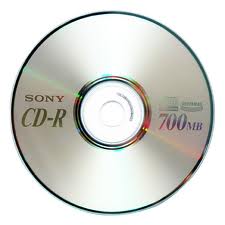
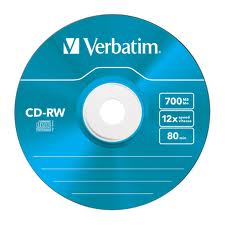
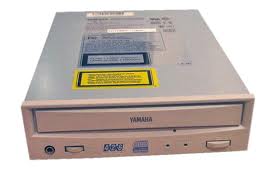
DVDs discs Types
This table summarizes the common DVDs types, short description, their capacity and the compatibility with computers.
(Which CD or DVD format should I use,n.d)
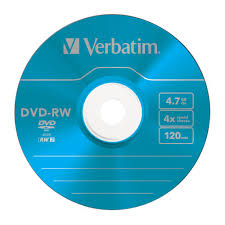

How should CDs / DVDs be chosen?
When choosing a CD or DVD player you should focus on the format types that suit your device. The format you should use is determined by the computer or the device that you plan to use the disc in after it’s burned. There are other factors we have to think about in order to choose the best CD/DVD. Speeds at which you want the drive to record and read / write data at. As well as the connection of optical drive contributes in faster burning to the discs, the best common connection is using SATA cable ( DVD/CD Drive Technology ,n.d)

Summary
CDs and DVDs are compact discs which differ in their usage according to the capacity. CDs are used to store audio and program files. CDs can hold up 700 MB of data. There are many types of CD produced in recent years such as CD-ROM, CD-R and CD-RW, each type used for different purpose. For the DVD, it used to store videos, films as well to store and distribute big programs. It can hold up about 4.7 GB of data and it is a single layered disc. Like the CD, DVD has different types for different purposes such as DVD+RW, DVD-ROM, DVD-RW, DVD-RAM and Blue-Ray. The process of storing data is occur with the help of four layers of materials that the compact discs composed of, then it can read the data. Choosing a good quality of CD/DVD determined by the Speeds at which you want the drive to record and read / write data, and the connection of optical drive through using SATA cable.
References
Difference between CD and DVD. (n.d). Retrieved December 21, 2013, from Difference Between: http://www.currentbuild.com/dvd
DVD/CD Drive Technology . (n.d). Retrieved Decemebr 20, 2013, from CurrentBuild Computer: http://www.currentbuild.com/dvd
How Does a CD/DVD ROM Drive Function? (n.d). Retrieved December 12, 2013, from eHow Tech: http://www.ehow.com/how-does_5004612_cddvd-rom-drive-function.html
Which CD or DVD format should I use? (n.d). Retrieved December 19, 2013, from Windows: http://windows.microsoft.com/en-ph/windows/which-cd-dvd-format#1TC=windows-7
